The Best Fluffy Pancakes recipe you will fall in love with. Full of tips and tricks to help you make the best pancakes.
The Perfect Marinara Pizza: A Guide to Making the Best Marinara Pizza
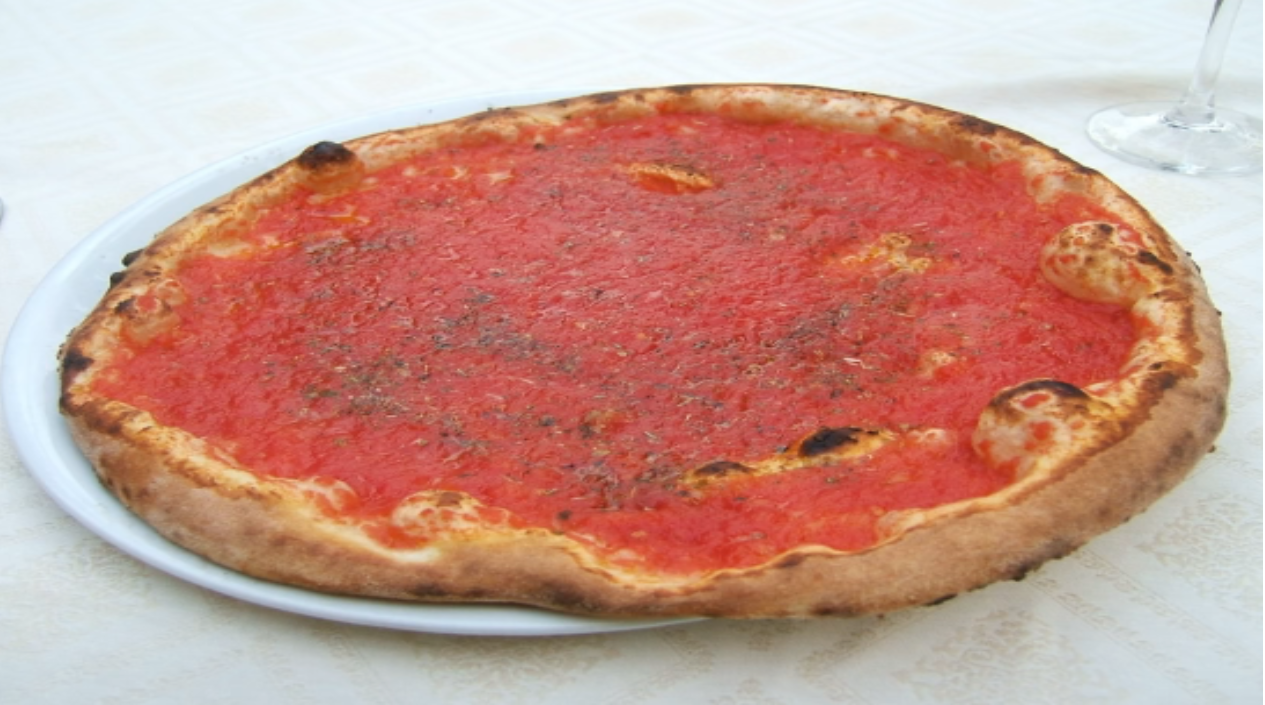
If you’re a pizza lover, then you know that flavor is king. And if you ask any pizza aficionado which pie is the best, chances are they’ll say the marinara pizza. Savory, tangy, and delicious, the marinara pizza shines through its simpler ingredients and attention to detail. But exactly what makes a good marinara pizza, and how can you achieve perfection in your own kitchen? In this guide, we’ll take an in-depth look at every aspect of making the ultimate marinara pizza.
Understanding the Marinara Pizza
Before diving into the ingredients and preparation, let’s explore the history and the unique qualities of the marinara pizza.
The History of Marinara Pizza

Contrary to popular belief, the marinara pizza is not actually named after the marinara sauce that it uses. Instead, it’s named after the sailors (marinai) who used to eat it as a quick and simple meal when they arrived back in port. The original marinara pizza was made with simple ingredients that were easy to find on board a ship: just tomatoes, garlic, oregano, and salt. Today, the marinara pizza is celebrated as a classic Italian dish and is enjoyed by people all over the world.
The history of the marinara pizza is closely tied to the history of Naples, Italy. In the 18th century, Naples was a bustling port city with a large population of working-class people. These people needed a quick and affordable meal that would sustain them throughout the day. The marinara pizza was the perfect solution.
Over time, the marinara pizza became a staple of Neapolitan cuisine. It was served in pizzerias and sold on the streets by vendors. In the early 20th century, Italian immigrants brought the marinara pizza to the United States, where it quickly became popular in Italian-American communities.
What Makes a Marinara Pizza Unique

In many ways, the marinara pizza is an exemplary example of less is more. Instead of piling toppings on top of each other, the marinara pizza uses just a few high-quality ingredients, allowing each to shine through on its own. This minimalist approach extends all the way to the dough, which is typically thin and crispy, with a distinctive charred appearance that comes from being baked in a wood-fired oven.

The simplicity of the marinara pizza allows the flavors of the ingredients to come through in every bite. The tomatoes are bright and acidic, the garlic is pungent and savory, and the oregano adds a subtle herbal note. The salt ties everything together, bringing out the natural flavors of the other ingredients.
Another unique aspect of the marinara pizza is its vegan-friendly nature. Unlike many other types of pizza, which are loaded with cheese and meat, the marinara pizza is entirely plant-based. This makes it a great option for people who are looking for a tasty and satisfying meal that doesn’t contain animal products.
Overall, the marinara pizza is a classic Italian dish that has stood the test of time. Its simple yet flavorful ingredients and unique qualities make it a favorite of pizza lovers all over the world.
Choosing the Right Ingredients
Now that you understand the basics of the marinara pizza, it’s time to focus on sourcing the best ingredients for your pie.
The Importance of High-Quality Tomatoes
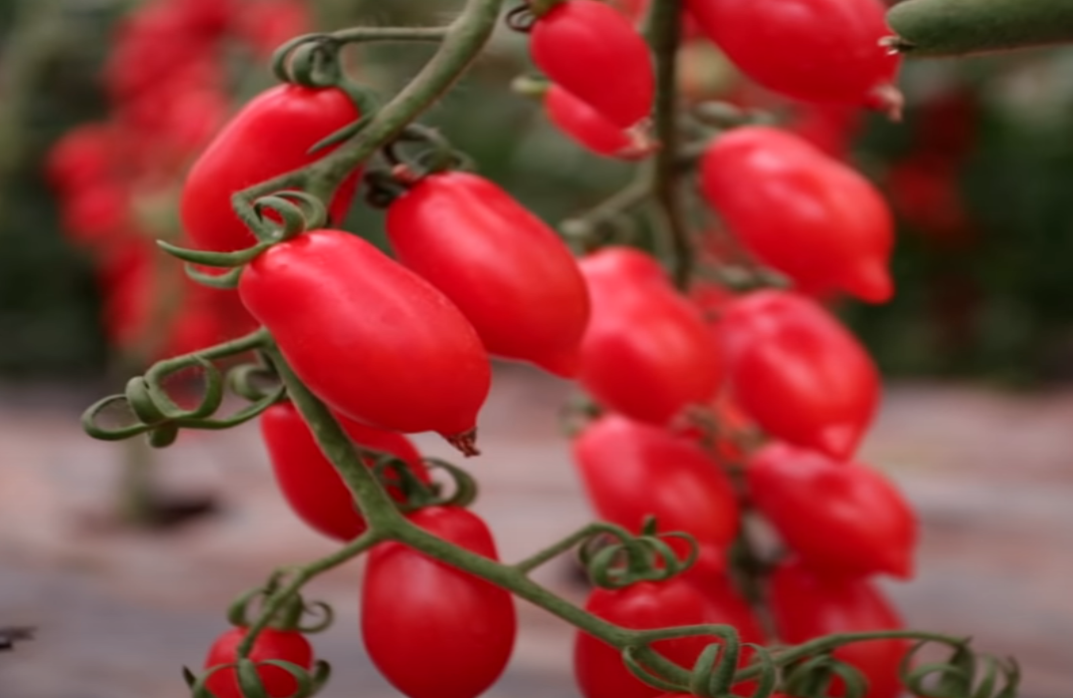
Tomatoes are the star of the show when it comes to the sauce on a marinara pizza. Opt for San Marzano tomatoes if you can find them, as they are the gold standard for this type of pizza. They have a low acidity and high sugar content, resulting in a naturally sweeter and more full-bodied sauce.
San Marzano tomatoes are grown in the volcanic soil at the base of Mount Vesuvius in Italy. They are hand-picked and canned within hours of harvesting, preserving their flavor and texture. Using San Marzano tomatoes will take your marinara pizza to the next level.
Selecting the Perfect Garlic and Oregano
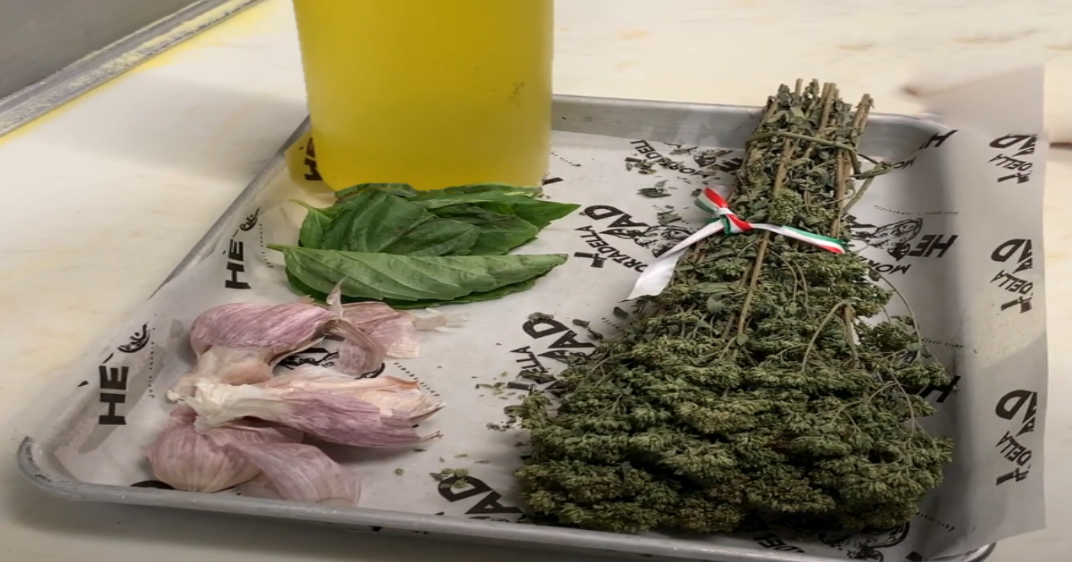
Garlic and oregano are both crucial flavor components of the sauce. Choose fresh garlic and tear the oregano leaves by hand for a fresher flavor. Be sure to chop the garlic finely or even press it through a garlic press to avoid large chunks that could overpower the other flavors.
When selecting garlic, look for firm, plump bulbs with tight skins. Avoid garlic that is soft or has begun to sprout. Fresh oregano can be found in the produce section of most grocery stores. It has a slightly peppery flavor that pairs well with the sweetness of the San Marzano tomatoes.
The Role of Olive Oil in Marinara Pizza
Olive oil is essential to give the pizza a rich, savory flavor and also helps the toppings cook evenly. Use a high-quality extra virgin olive oil for the best results.
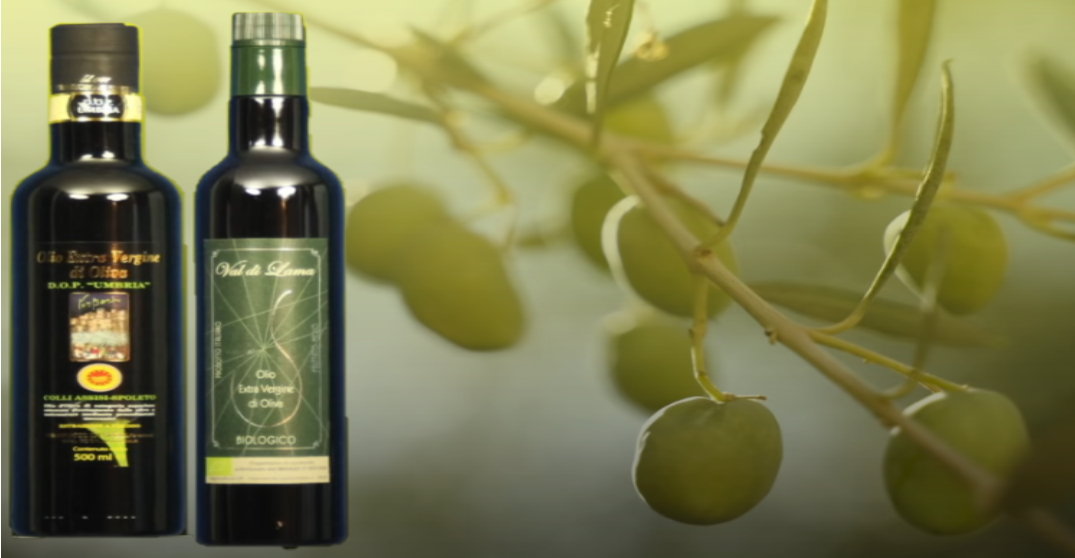
Extra virgin olive oil is made from the first cold pressing of the olives and has a fruity, slightly bitter flavor. It is higher in antioxidants and beneficial fats than other types of olive oil. Look for a dark glass bottle to protect the oil from light, which can cause it to become rancid.
To Cheese or Not to Cheese: The Marinara Debate
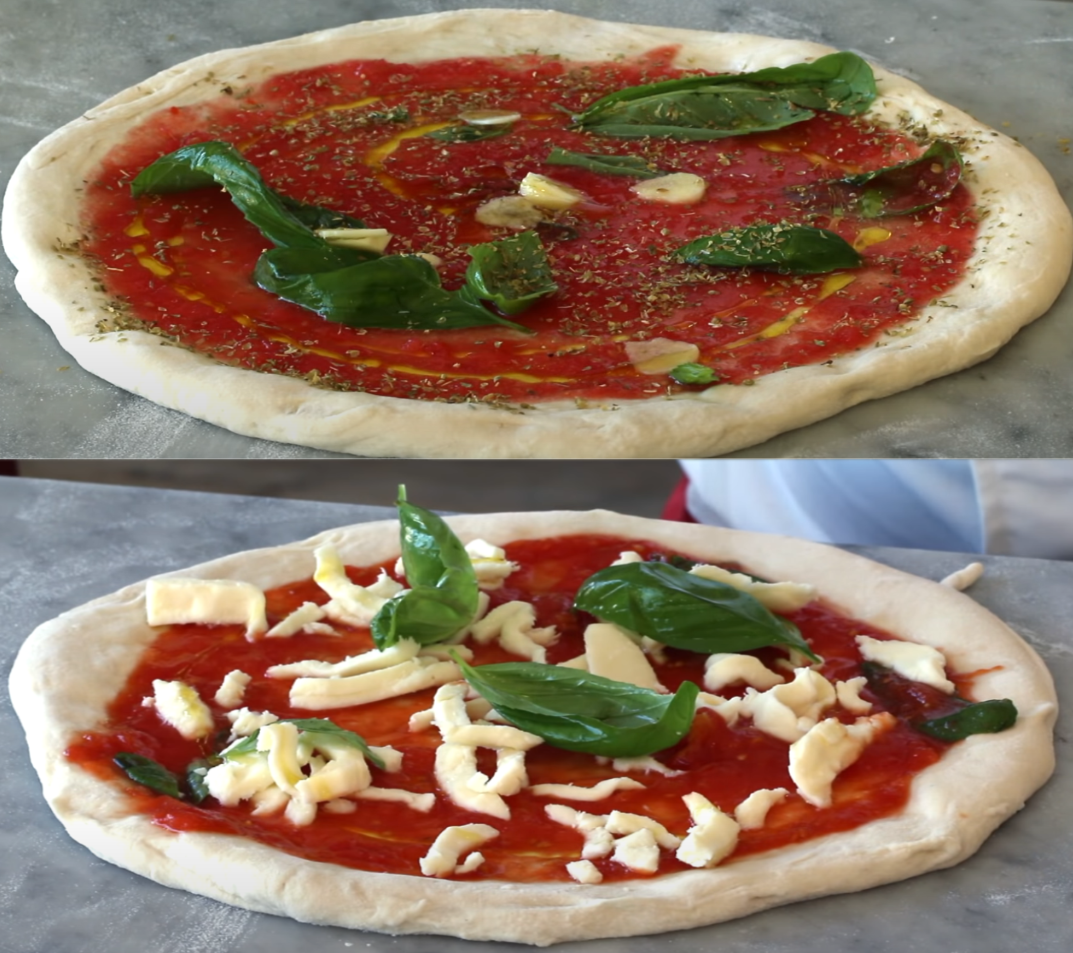
Traditionally, marinara pizza doesn’t have cheese, but some prefer to add a bit of Pecorino Romano or Parmesan. The choice is up to you.
Pecorino Romano is a hard, salty cheese made from sheep’s milk. It has a sharp, tangy flavor that can add depth to the sauce. Parmesan, on the other hand, is a milder cheese made from cow’s milk. It has a nutty, slightly sweet flavor that can complement the sweetness of the San Marzano tomatoes. If you do decide to add cheese, sprinkle it sparingly over the sauce to avoid overwhelming the other flavors.
Preparing the Pizza Dough
Once you’ve got all your ingredients in order, it’s time to turn your attention to the pizza dough. The dough is the foundation of any good pizza, so it’s important to get it right.
Homemade Dough vs. Store-Bought Dough
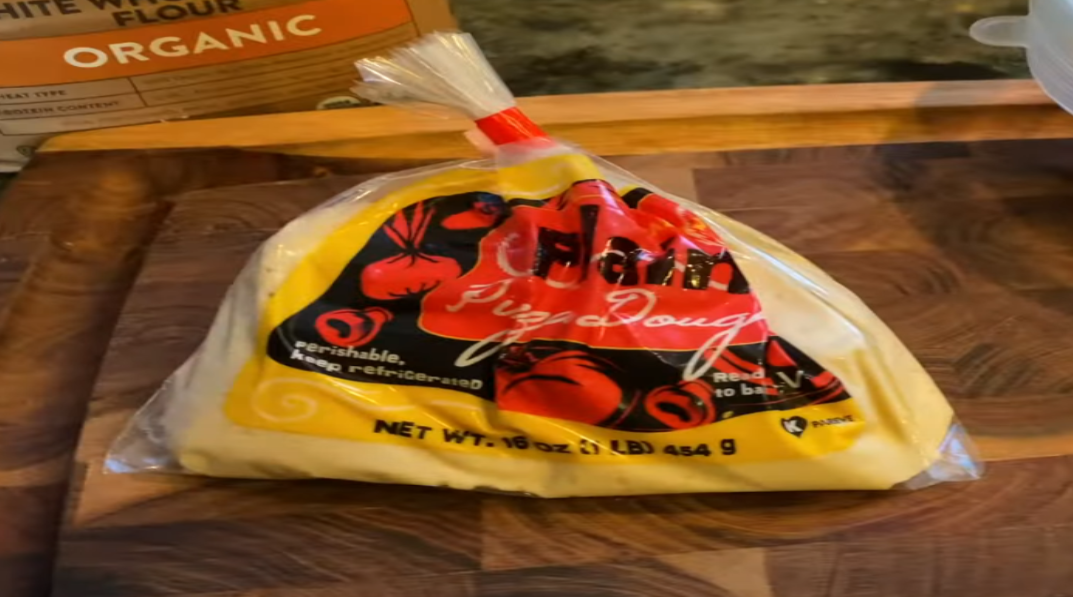
If you’re short on time, store-bought pizza dough can work well, but making your own dough is worth the effort. Not only does it taste better, but it also allows you to customize the dough to your liking. A classic marinara pizza dough requires only four ingredients: flour, water, salt, and yeast.
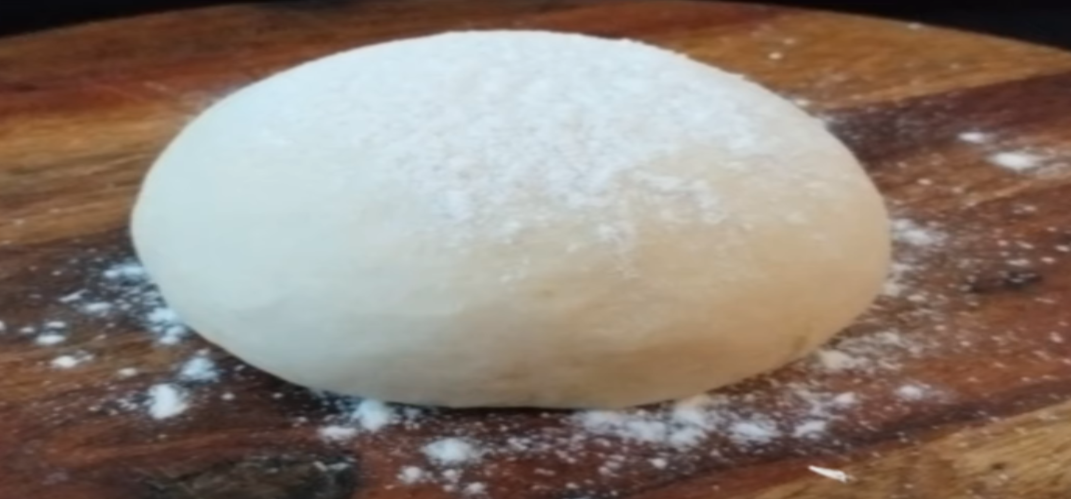
Making your own dough also gives you the freedom to experiment with different types of flour. Bread flour is a popular choice for a chewy texture, while all-purpose flour creates a crisper crust. You can also add herbs, spices, or even cheese to the dough for added flavor.
Letting your dough rest overnight in the refrigerator will improve its flavor and texture. The slow rise allows the yeast to develop and gives the dough a more complex flavor. If you’re short on time, you can let the dough rise at room temperature for a few hours, but it won’t be as flavorful.
Tips for Making the Perfect Pizza Dough
When making your pizza dough, there are a few tips to keep in mind. First, make sure your water is warm, but not too hot. Water that is too hot can kill the yeast, while water that is too cold won’t activate it.
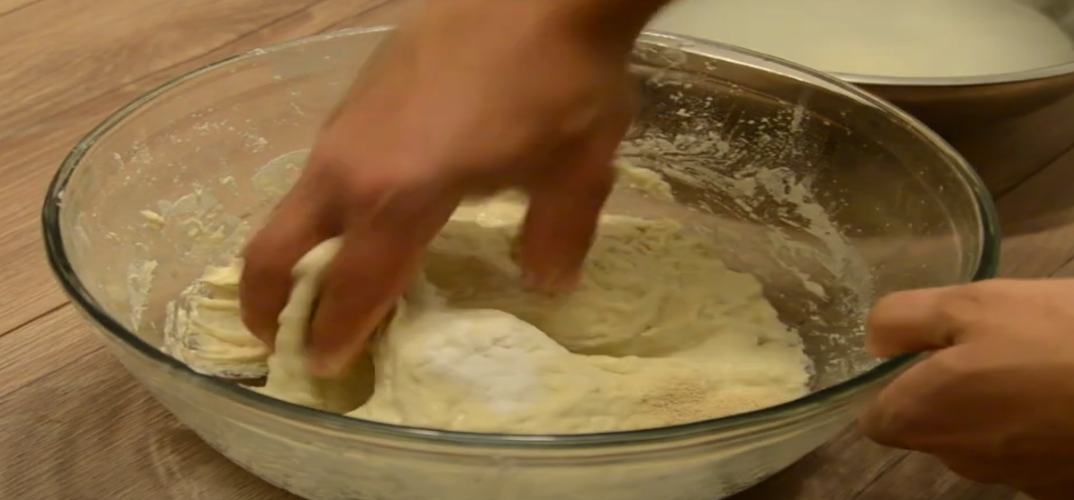
Kneading the dough by hand or with a stand mixer creates gluten strands that give the crust structure. The longer you knead the dough, the more gluten strands you’ll create. However, be careful not to over-knead the dough, as this can make it tough.
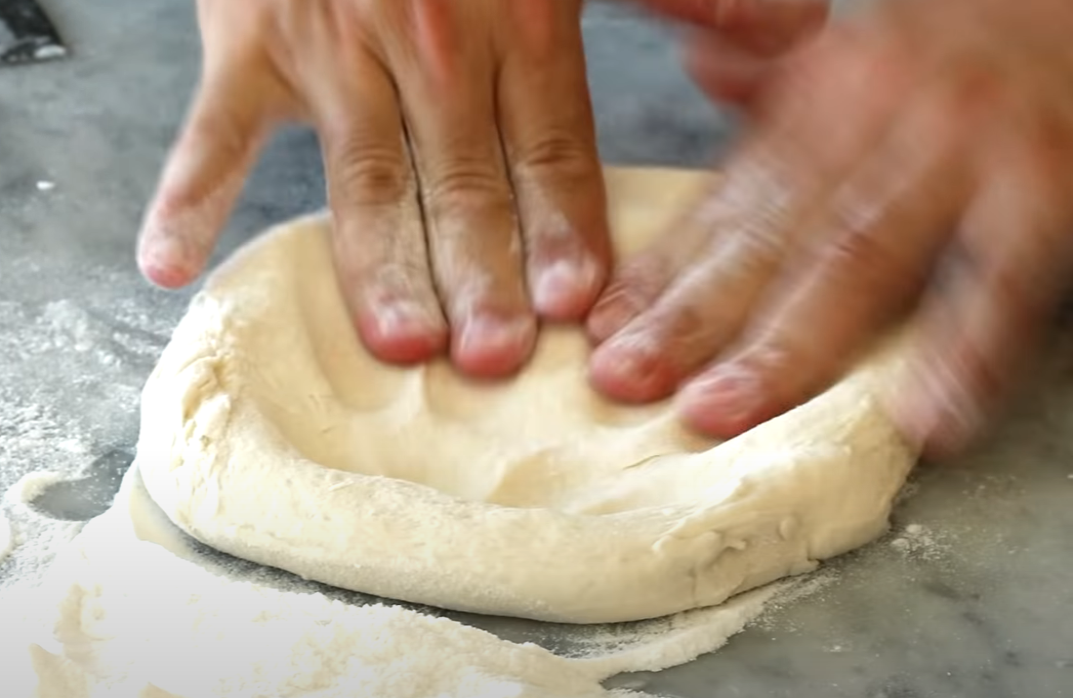
Stretching the dough is also an important step in creating the perfect pizza crust. Use your hands to gently stretch the dough, working from the center outwards. Don’t worry if the dough tears or has uneven edges – this adds to the rustic charm of homemade pizza.
Rolling and Shaping Your Dough
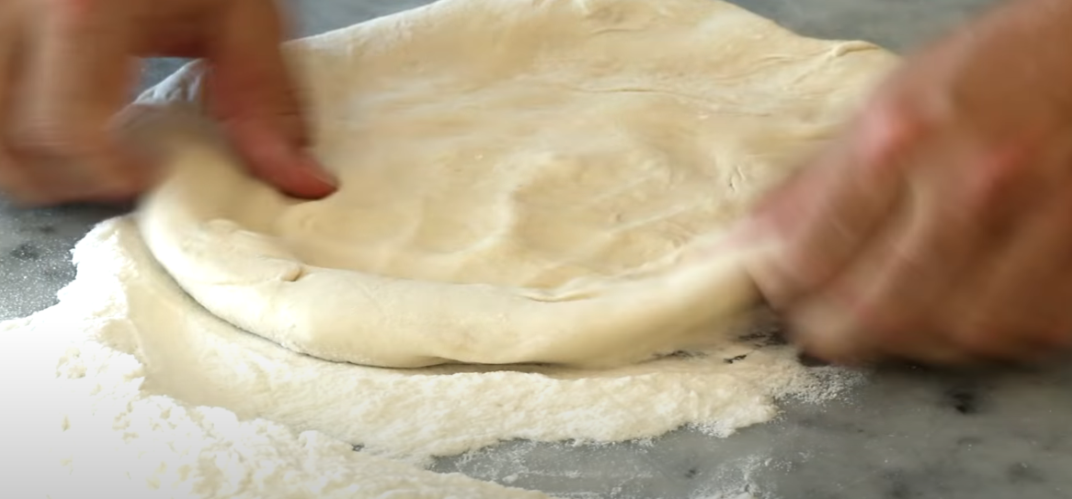
Once your dough has risen sufficiently, it’s time to roll it out or shape it. If you’re using a rolling pin, dust it with flour to prevent the dough from sticking. Roll the dough out to the desired thickness, keeping in mind that it will rise slightly during baking.
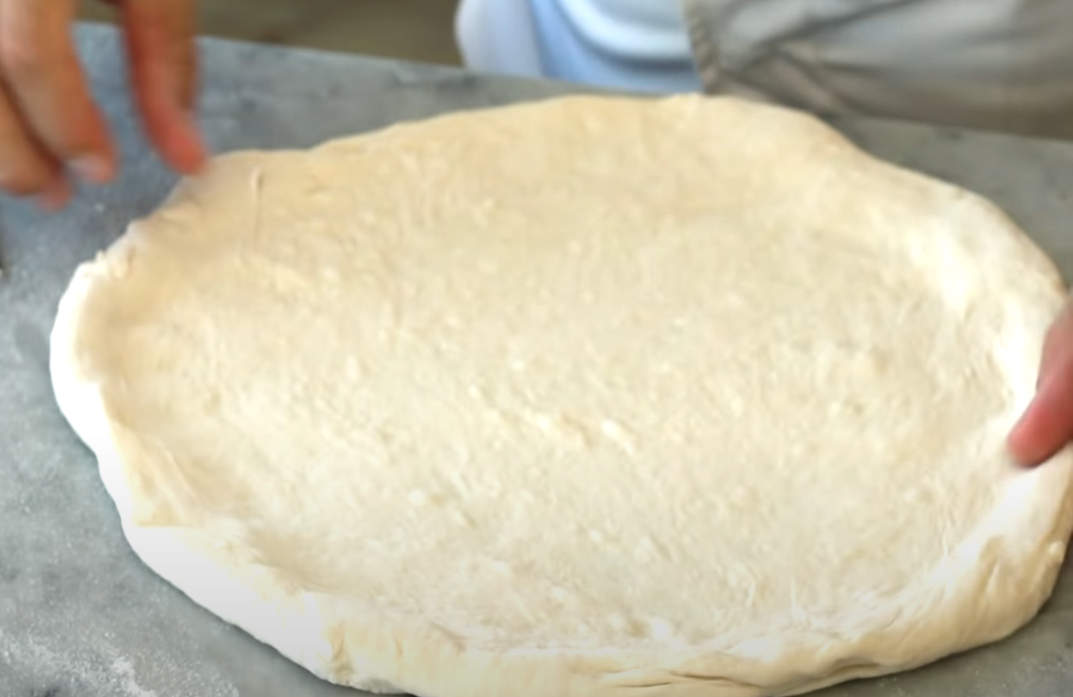
If you prefer a thinner crust, you can stretch the dough out by hand. Place the dough on a floured surface and use your hands to gently stretch it out, working from the center outwards. Always let the dough rest for a few minutes after stretching it out so that it doesn’t retract or shrink during baking.
Now that your pizza dough is ready, it’s time to add your toppings and bake it to perfection. Whether you prefer classic margherita or something more adventurous, the key to a great pizza is starting with a great crust.
Crafting the Marinara Sauce
The marinara sauce is both simple and complex at the same time. Here are some tips to make sure your sauce is perfect.
The Art of Simplicity: Marinara Sauce Basics
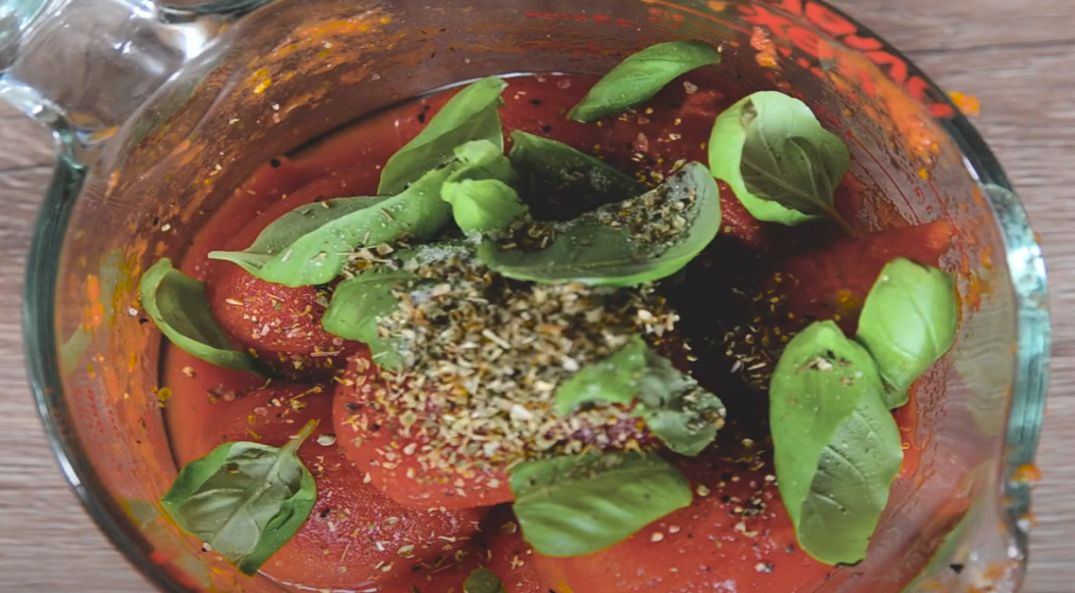
Marinara sauce is essentially just a blend of tomatoes, garlic, oregano, olive oil, and salt. However, the quality of the ingredients you use can greatly affect the taste of the final product. It is recommended to use fresh, ripe tomatoes and high-quality olive oil for the best results.
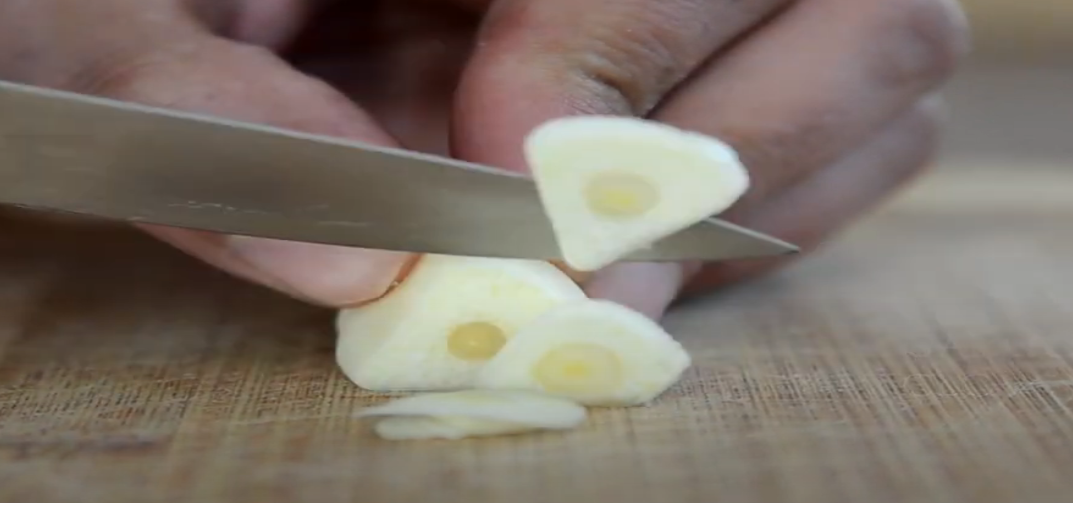
When it comes to garlic, some prefer to finely chop it and saute it in the olive oil before adding the tomatoes, while others prefer to use whole garlic cloves that are removed before serving. Experiment with different techniques to find what works best for you.
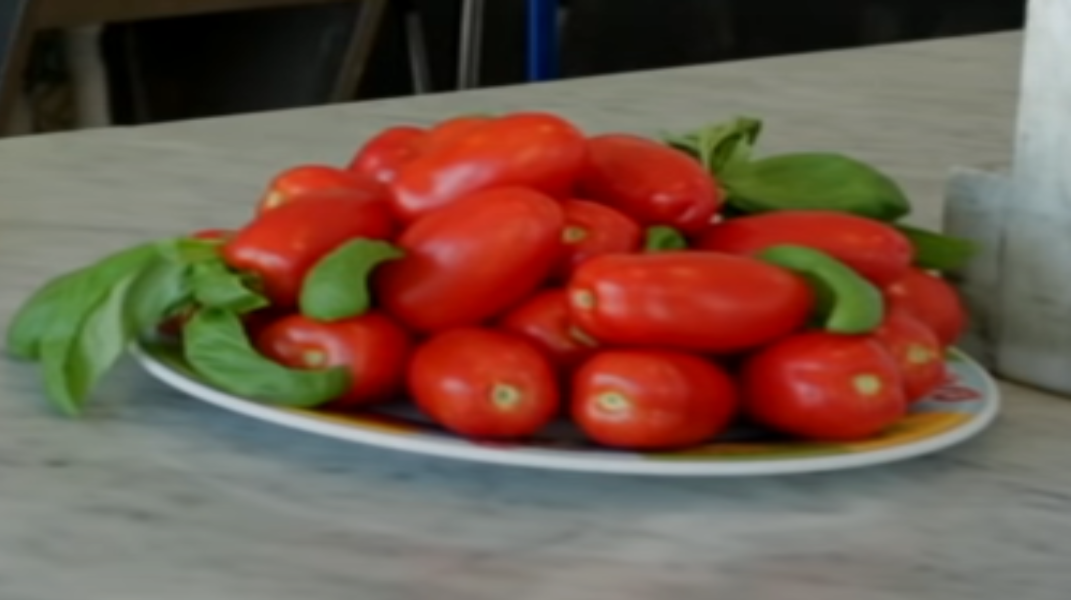
Another key factor in creating a delicious marinara sauce is the type of tomatoes used. San Marzano tomatoes, which are grown in the volcanic soil of Mount Vesuvius in Italy, are widely regarded as the best tomatoes for making marinara sauce due to their sweet flavor and low acidity.
To make the sauce, combine all of the ingredients in a blender or food processor until smooth. You can also make the sauce by hand by simply crushing the tomatoes with your hands and mixing them with the other ingredients.
Cooking Techniques for a Flavorful Sauce
Sauteing the garlic in olive oil before adding the tomatoes helps to deepen the flavor of the sauce. Cooking the sauce for a longer period of time will allow the flavors to meld together and create a more complex taste. Some chefs even let their marinara sauce simmer for hours to achieve the perfect flavor.
Another technique to consider is adding a splash of red wine to the sauce while it cooks. The alcohol will cook off, leaving behind a rich, deep flavor that complements the other ingredients.
Adjusting the Sauce to Your Taste
Season the sauce to your taste by adding more salt or oregano as needed. You can also add a pinch of sugar or red pepper flakes for a hint of sweetness or spice. Some chefs even add a bit of grated Parmesan cheese to the sauce for added depth of flavor.
Remember, the beauty of marinara sauce is that it can be customized to your personal taste. Experiment with different ingredients and techniques until you find the perfect combination for you.
Assembling and Baking the Pizza
With the dough and sauce in hand, it’s time to assemble your marinara pizza. The marinara pizza is a classic, minimalist pizza that highlights the flavors of the sauce and dough. It’s perfect for those who prefer a lighter pizza or want to enjoy the simplicity of a traditional Italian pizza.
Layering the Ingredients for Optimal Flavor
To assemble your marinara pizza, start by rolling out your pizza dough on a floured surface. Once your dough is rolled out to your desired thickness, transfer it to a pizza peel or baking sheet.
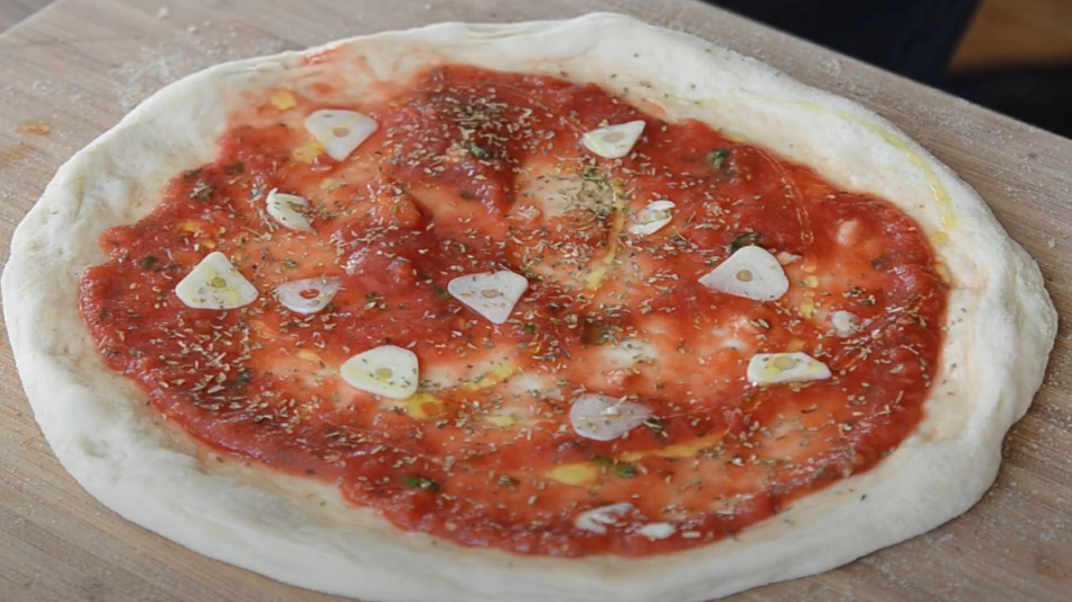
Add the sauce onto your rolled-out pizza dough, leaving about an inch of space around the edges. The sauce is the star of the show in a marinara pizza, so be sure to use a high-quality tomato sauce that’s been seasoned with garlic, basil, and other Italian herbs. Top with thinly sliced garlic, oregano, and a drizzle of olive oil. These ingredients will add depth and complexity to the pizza’s flavor profile.
If you want to add cheese, sprinkle it on top of the sauce. Fresh mozzarella or Parmesan cheese are both great options for a marinara pizza. Don’t go overboard with the toppings, as the marinara pizza is meant to be minimalist.
Preheating and Baking Tips for a Crispy Crust
Preheat your oven to 450°F and place your pizza on a preheated pizza stone or baking sheet. The key to a crispy crust is a hot oven and a preheated pizza stone or baking sheet. The pizza stone or baking sheet will help distribute heat evenly and create a crispy crust. Bake for 10 to 15 minutes, until the crust is golden and crispy. Keep an eye on the pizza to prevent it from burning. If you notice the edges of the pizza are browning too quickly, use a pizza peel or spatula to rotate the pizza halfway through the cooking time.
Cooking Time and Temperature Guidelines
Cooking times may vary depending on your oven and the thickness of your dough. Keep an eye on the pizza and remove it from the oven when the crust is crispy and the cheese is melted (if using). A good rule of thumb is to aim for a crust that is slightly charred but not burnt. Once your pizza is done, let it cool for a few minutes before slicing and serving. This will prevent the toppings from sliding off and allow the cheese to set.
Serving and Enjoying Your Marinara Pizza
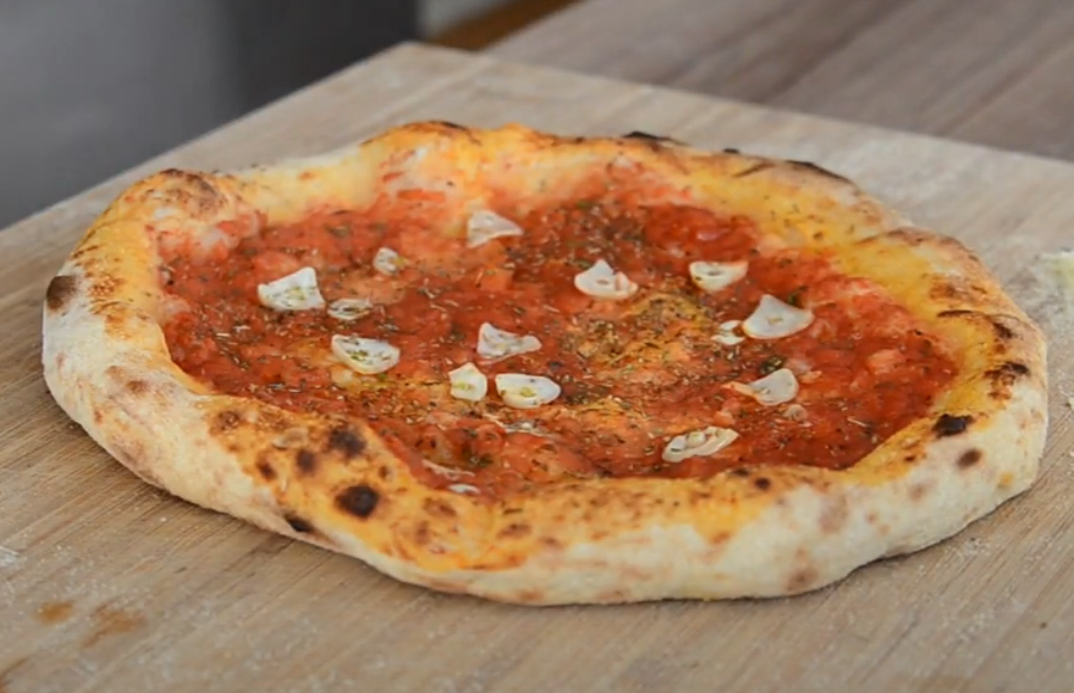
Now that your perfect marinara pizza is ready, it’s time to sit back and enjoy the fruits of your labor. The aroma of the freshly baked pizza will make your mouth water, and the taste will leave you craving for more. The crispy crust, flavorful tomato sauce, and melted mozzarella cheese make this pizza a classic and a favorite of many.
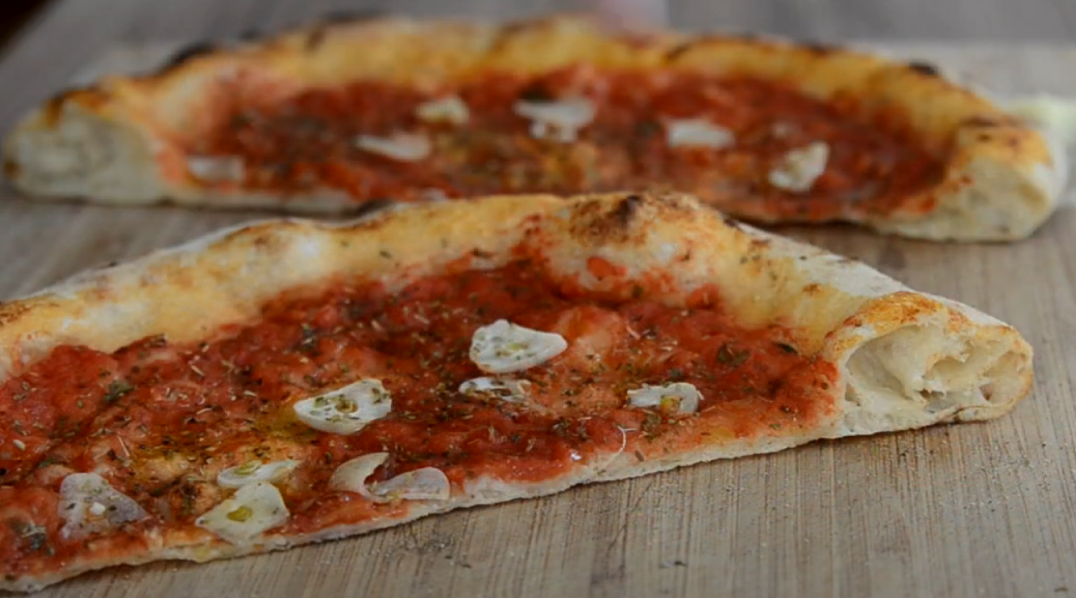
As you take your first bite, notice the balance of flavors and textures. The tanginess of the tomato sauce complements the richness of the cheese, while the crust provides a satisfying crunch. The marinara pizza is a simple yet delicious dish that can be enjoyed on its own or paired with other foods.
Pairing Suggestions for a Complete Meal
Pair your marinara pizza with a simple side salad or a glass of red wine. The acidity in the salad will help balance the richness of the pizza, while the wine will enhance its flavors. For dessert, try a classic Italian dish like tiramisu or panna cotta. These desserts are light and creamy, perfect for ending a meal on a sweet note.
Storing and Reheating Leftovers
If you have leftovers, store them in an airtight container in the refrigerator for up to three days. The pizza will still taste great, but the crust may become a bit soggy. To restore its crispiness, reheat the pizza in a 350°F oven for 10 minutes. This will make the crust crispy again, and the cheese will become gooey and delicious.
Exploring Variations on the Classic Marinara Pizza
While the classic marinara pizza is delicious on its own, there are plenty of variations that you can explore if you’re feeling adventurous. Add some anchovies or capers for a briny kick, or experiment with different types of cheese or toppings like bell peppers, olives, or mushrooms. You can also try making a white pizza with ricotta cheese, garlic, and olive oil instead of tomato sauce. The possibilities are endless, and you can create your own unique pizza recipe.
In conclusion, making the perfect marinara pizza requires attention to detail, quality ingredients, and a bit of know-how. With this guide, you’ll be able to create a delicious and authentic marinara pizza in your own home. The marinara pizza is a classic dish that has stood the test of time, and it’s easy to see why. Its simple yet delicious flavors and textures make it a favorite of many. So go ahead and make your own marinara pizza, and enjoy the satisfaction of creating something delicious from scratch. Buon appetito!



